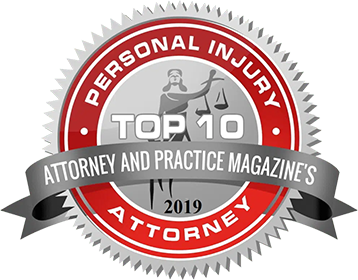For a person who has recently been injured, a decision that can have lasting effects on a future personal injury lawsuit against the at-fault party who caused their injuries is how to seek and receive medical treatment to help with resolving the injuries and/or managing the pain the injuries are causing, depending on the type of injury. The manner in which medical treatment is sought by an injured person is used by Defendants to create a pitfall that it is easy to fall in. This pitfall can be easily classified as a “damned if you do, damned if you don’t” situation.
Seeking More Medical Care Than Necessary
If a person who has been injured seeks medical care on a frequent basis after the injury has occurred to rehabilitate the injured areas of the body or manage pain, defense attorneys will claim that the defendant is not legally responsible for the entirety of the medical bills incurred by the plaintiff because the medical treatment was not “reasonable and customary” under the circumstances. This argument will be some variation of the defense stating that only 4 physical therapy sessions were truly required to get rid of the pain or physical impairment but the injured party had 8 appointments. By this logic, they will go on to conclude, the defendant is legally responsible for half of the medical bills the injured party paid.
The Dangers of Not Seeking Enough Medical Care
The flipside of this argument is the exact opposite, which is that the defense will say that the injured party is experiencing more pain than they would otherwise be experiencing if they had MORE medical treatment. To use the same example, if the injured party had 4 physical therapy sessions and truthfully states that the pain or physical impairment that resulted from the injury lingered on after the accident and after the treatment, the defense will say that the injured party ought to have gone to 8 physical therapy sessions to really nip the pain in the bud. This argument sets the groundwork for the defense’s conclusion that compensation for the pain and suffering the injured party is experiencing should be limited because the injured party failed to mitigate the pain and suffering like they should have.
Countering the Under-Treated Argument
Thankfully, there are some ways to avoid the “Plaintiff under-treated” argument, which is the assertion that the injured person should have made 8 appointments with medical providers to manage the injury and/or pain. Some of these ways include an injured party making sure that they attend any recommended follow-up treatment by the referring medical provider to come back to see them again or to follow-up elsewhere (i.e. with your primary care physician), to take all recommended at-home actions to help manage pain or improve your injury, and to seek medical treatment if you truly need it rather than toughing it out and gritting your teeth and bearing it. There are also ways to avoid the “Plaintiff over-treated” argument, which is the assertion the injured party went to 8 appointments when he or she really only needed 4.
A key way is, not unlike one of the methods to counter the under-treatment attack, to make sure that any and all recommendations by treating medical providers are followed. For example, if you have a muscle strain in your neck and the doctor recommends to do X, Y & Z, you actually doing these things, to the extent you possibly can, will undercut the over-treatment argument. If on the 4th appointment a medical professional recommends you do at-home stretches and certain exercises and you do perform these as recommended, on the 5th through the 8th appointments if you are still in pain after doing what was recommended by a professional, then it makes an argument that the those last 4 appointments were unnecessary less credible.
Reach Out to Our Legal Team Today
Considerations such as these are understandably the last thing on a person’s mind when they have been hurt and want to do what they can to feel better. Nonetheless, it is a reality that this Catch-22 is used constantly when an injury turns into a lawsuit down the line. Having knowledge of what the arguments coming down the pike will be is as good a tool as any as knowing how to fight them preemptively.










